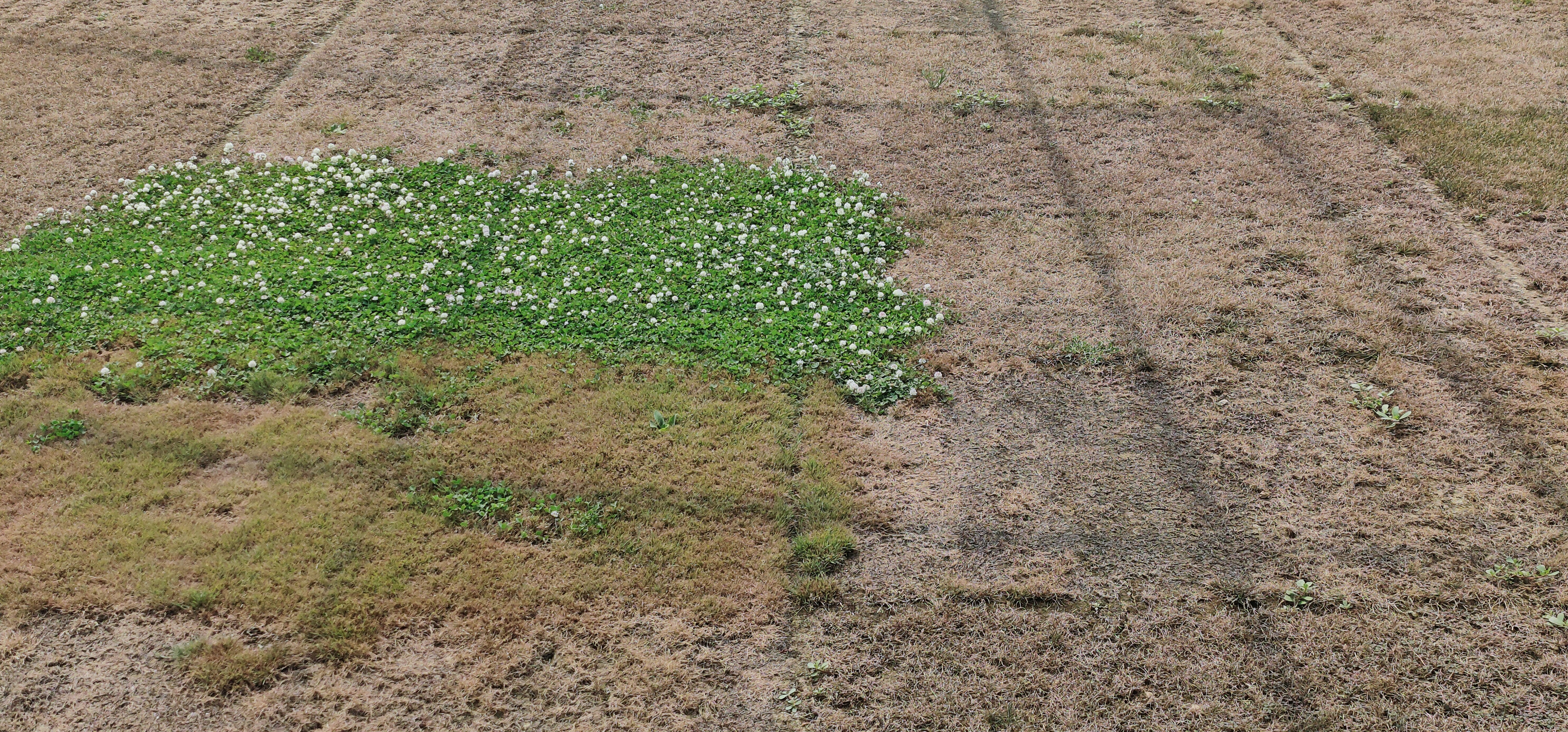Drought-tolerant turf solutions
As summer droughts become more common, we suggest ways that turf managers can improve the look of their turf. Our solutions don’t just look better, they help turf managers save water and reduce the amount of work involved in keeping turf green through a long summer of drought.
29/08/2022
Summer droughts may well be here to stay. If the wide areas of brown turf that covered much of Europe during the summer of 2022 are a pointer to the future, now is the time to rethink the way turf managers sow and manage their turf.
So, what can be done to keep sports grounds, gardens, and public spaces looking green during summer droughts? How can turf managers reduce their water use and ease the maintenance demands of future dry summers?
To withstand a summer drought and keep turf green, ProNitro® seed coating, Microclover®, 4turf® and other more drought-tolerant species might be part of the solution.
Add a more resilient layer of green leaves with Microclover®
You may have noticed during this summer of drought that patches of green clover continued to grow within the parched brown turf. Clover has the ability to fix its own nitrogen from the atmosphere, making it highly tolerant to drought and high-stress environments.
Microclover® is a specially bred, dwarf white clover that tolerates frequent mowing, at a low mowing height, and that blends in well with other turf species. With smaller leaves and a low-growing habit, it adds to the dense, uniform appearance of a better-looking turf. In trials conducted by the STRI, Microclover® produced better turf coverage and colour than a pure grass surface did. Adding Microclover® to the mixture creates a turf that needs less water. Its better heat and drought-tolerance makes it less costly to maintain.

Microclover® – the greenest survivor in a drought (France, summer 2022)
Choose 4turf® for deeper, water-seeking roots
Any turf grass intended to survive a drought has to quickly develop long roots and a bigger, stronger root mass. 4turf® is a range of specially developed tetraploid ryegrasses with faster root growth and a strong root mass. Their vigorous rooting habit makes them extremely drought-tolerant during spring droughts (when water is still available deep in the soil) and summer droughts (when water is absent). In a spring drought they reach water deep in the soil; in a summer drought they survive with less added irrigation. And if the drought is so severe that they do fall victim, they recover faster when the rains return.
The current European evaluation system does not acknowledge the value of a deep root mass and generous root architecture. There are no official tests and therefore no rewards for good performance. Nevertheless, we at DLF know that it is essential to pursue the goal of drought-tolerance. For the benefit of drought-stressed turf managers we will continue to bring high-performing varieties to the market.
Give your turf a better start with ProNitro® seed coating
If turf managers can get their grass seeds to germinate sooner, and the seedlings to grow faster, the newly sown turf would be much better prepared for any subsequent drought. ProNitro® is the seed coating that does exactly that. The nitrogen fertiliser in the coating gives germinating seeds and growing seedlings the exact amount of nitrogen they need to thrive. Seeds coated with ProNitro® produce up to 34% more plants and seedlings that grow up to 30% longer roots. The coating creates a faster and more successful establishment, and a turf that’s more likely to perform better when a drought hits.
ProNitro® helps even more by making better use of the moisture surrounding the growing seedling. By breaking the surface tension of water, the technology distributes moisture more efficiently and uniformly within the soil. The process is so effective, ProNitro® seedlings need up to 15% less water during establishment. They require less irrigation which cuts maintenance costs during a drought.
Sow drought-tolerant grass species
Not all grass species are the same. Some are more tolerant of droughts. To create a drought-tolerant turf, include some of them in the turf mixture if possible. The most drought-tolerant turf species is probably tall fescue, because of its ability to extract water deep in the soil. An even better choice for improved summer-drought turf quality would be one of our latest generation of tall fescues for example AZZORO and ATBARA.
Hard fescue is another excellent species for turf managers who’d like to grow a fine-leaved turf in a sandy or shallow soil. In summer heat and drought, hard fescue performs much better than all other fine fescues.
If droughts are likely to become more extreme, cool-season grasses could be replaced with warm season species such as Bermuda grass.
Drought-tolerance is better for everyone
Choosing turf that stays greener for longer during a drought is the sustainable choice. Drought-tolerant grasses that continue to thrive throughout the summer help to reduce the urban heat-island effect. They also continue to sequester CO2 during these dry periods. And since they need little to no irrigation, they help save water.
